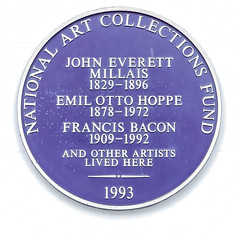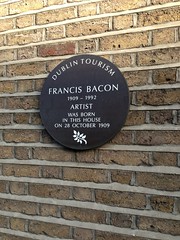Francis Bacon
Commemorated on 3 plaques
John Everett Millais 1829-1896, Emil Otto Hoppe 1878-1972, Francis Bacon 1909-1992 and other artists lived here
7 Cromwell Place, London, United Kingdom where they lived
Francis Bacon 1909 - 1992 artist was born in this house on 28 October 1909
63 Lower Baggot Street, Dublin, Ireland where they was born (1909)
Francis Bacon 1909-1992 Painter lived and worked here 1961-1992
7 Reece Mews, South Kensington, London, United Kingdom where they lived (1961-1992) and worked (1961-1992)




